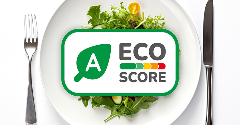News
US pet food regulations unravel the mysteries of product labelling
4 Mar 2024New regulations governing the labelling of pet foods were approved by AAFCO members last July, providing the first major update to pet food regulations in 40 years. The move was a response to pet owners asking for clarity on labels that left many confused or unsure about what they have been feeding their animals.
The new regulations were approved by AAFCO members last July, providing the first major update to pet food regulations in 40 years. The move was a response to pet owners asking for clarity on labels that left many confused or unsure about what they have been feeding their animals.

The Model Regulations for Pet Foods and Specialty Pet Foods aims to set a new standard for pet food manufacturers and distributors to follow throughout the United States and Canada. The new labelling regulation was introduced after a strategic consultation period that involved both consumers and professionals in the pet food industry.
Answering consumer demands
“From time-to-time AAFCO evaluates its model language to see if it needs to be updated to keep up with consumer demand or trends in the industry,” said Austin Therrell, executive director at AAFCO.
“When we began the Pet Food Label Modernization project, we were aware of some general feedback from consumers that pet food labeling was difficult to understand. We wanted to make sure that information presented on the label was clear and easy to understand so that consumers could make better purchasing decisions for their animals.”
“AAFCO has recommended a six-year enforcement discretion period, or transition period, that allows for states to adopt the new Model Regulations for Pet Food and Specialty Pet Food and for manufacturers to incorporate the changes into their labels and packaging,” said Therrell. “The National Association of Departments of Agriculture (NASDA) also recently unanimously voted to support AAFCO’s new Model Regulations and six-year enforcement discretion timeline.”
The enforcement discretion period was proposed to start from the regulation’s publication date at the beginning of 2024, thus giving individual states the necessary time to enforce the regulations according to their different resources and protocols.
Pets are now seen as family
The new regulations are a response to a significant shift in consumers’ approach to pet care in recent years, changes that were amplified by the COVID-19 pandemic when an epidemic of loneliness triggered by lockdowns led to a spike in pet ownership.
Underlining this trend, a 2023 PEW survey showed that while 62% of US households confirmed that they owned a pet, 51% of those respondents said they not only consider their pets to be a part of their family but said they are as much a part of their family as a human member. This is translating into heightened attention to pet care, and particularly, the quality of pet feed.
AAFCO targets four main areas for improvements
“Today, consumers are more educated about their pets’ health,” said Therrell: “The new Model Regulations for Pet Food and Specialty Pet Food are intended to enhance transparency and provide pet food label information in a format more familiar to pet owners. These are emphasised in the four main updates which are detailed in the official document.”
Those four areas are:
- Nutrition Facts Box should be updated to more closely resemble labels for human food.
- Intended Use Statement to be displayed on the lower-third level of the front display panel, ensuring consumers can more easily identify what the pet food is about.
- Handling and Storage Instructions to clarify the use of consistent terminology and common terms for vitamins.
- Handling and Storage Instructions are recommended as optional but should be updated and standardised with icons for increased consistency.
Public comment on copper claims
In another sign that pet food labelling is under scrutiny, AAFCO is currently seeking feedback about proposed guidelines for the amount of copper allowed in dog food.
The proposed ‘controlled copper’ claim would recommend that dog food contains no more than 15mg of copper/kg DM and no more than 3.75mg per 1,000 kcal of metabolisable energy, alongside a Guaranteed Analysis on the label to back up the information.
AAFCO is currently seeking comments on this proposal until March 1st, 2024, with interested parties invited to contact the organisation directly.
Related news

UK Government overhauls childhood obesity strategy
21 Nov 2025
The UK Government has announced a new package of measures designed to reverse the nation’s childhood obesity epidemic following the release of statistics revealing the scale of the crisis.
Read more
How younger consumers are redefining ingredient choices and rejecting brand loyalty
18 Nov 2025
Gen Z and millennial consumers’ preferences for transparency, functionality, and purpose are “redefining the very nature of consumption itself”, says SPINS.
Read more
New UPF standard hoped to offer consumers ‘coherence and clarity’
10 Nov 2025
Ingredients companies are being urged to enter “a new era of partnership and innovation” following the launch of the industry’s first non-UPF verification scheme.
Read more
Ingredient quantities mislabelled on popular protein bars, independent tests show
5 Nov 2025
Some popular protein bars contain more fat, carbs, and/or sugars than claimed on their labels, independent nutrition testing reveals.
Read more
Does promoting protein content push up plant-based sales?
27 Oct 2025
Promoting the protein content of meat-free products is a more effective sales strategy than adding carbon labels, a study of UK bakery chain Greggs suggests.
Read more
Supplement shoppers seek storytelling and science-backed suppliers
17 Oct 2025
Supplement consumers want specific health benefits that focus on prevention and personalisation, according to data from HealthFocus International.
Read more
Food fraud risks rise as brands fight economic and environmental headwinds
10 Oct 2025
Climate change, geopolitics, regulations, and demand for sustainable products are pushing up food fraud and adulteration risks, warns a world-leading food fraud expert.
Read more
The growing appeal of nutrient-dense food claims
2 Oct 2025
Nutrient-dense claims are rising as consumers reject the “empty calories” of UPFs in favour of products that provide meaningful nutrition with every calorie, Mintel data shows.
Read more
What does MAHA mean for the US nutraceutical industry?
30 Sep 2025
Industry associations have expressed mixed reactions to new policy directions on health and nutrition under the Make America Health Again (MAHA) banner.
Read more
Eco-Score labels improve consumer identification of sustainable foods
22 Sep 2025
The presence of a front-of-pack Eco-Score label improves consumers' accuracy in identifying sustainable food products from 52% to 72%, a study suggests.
Read more